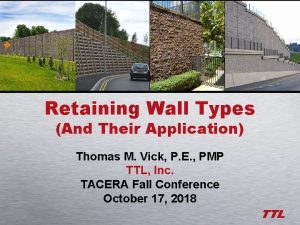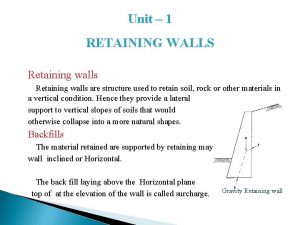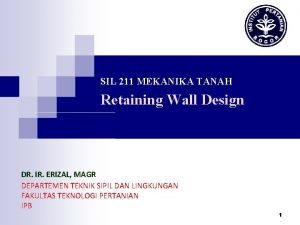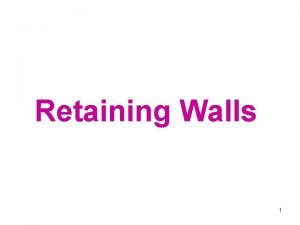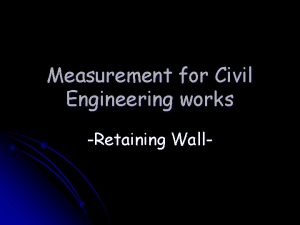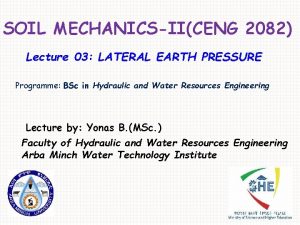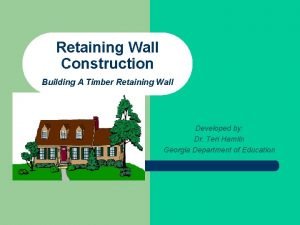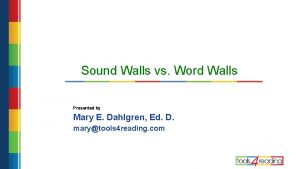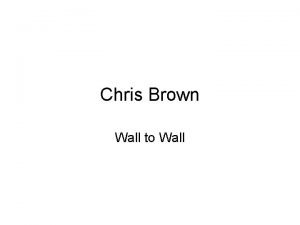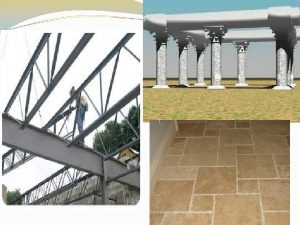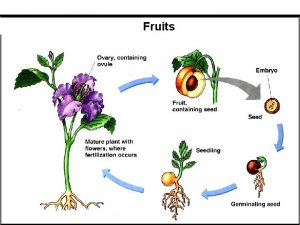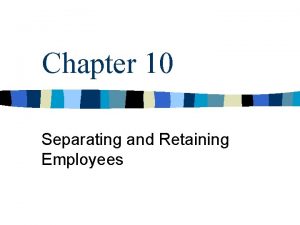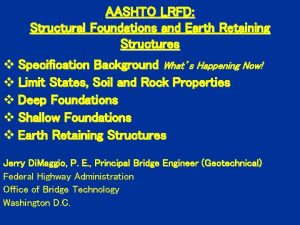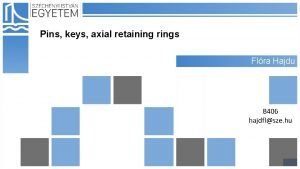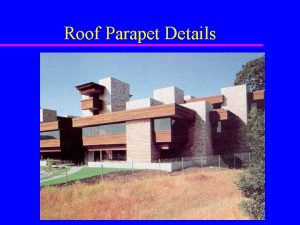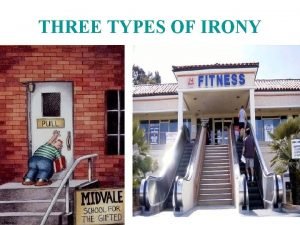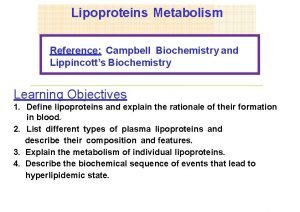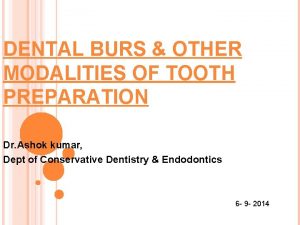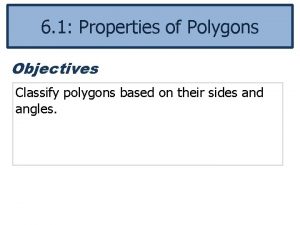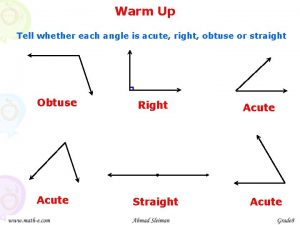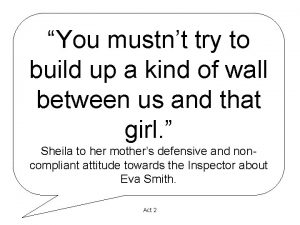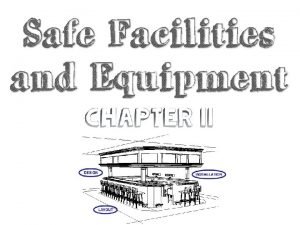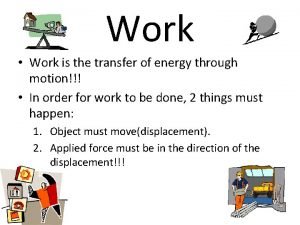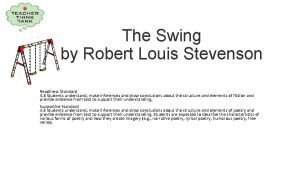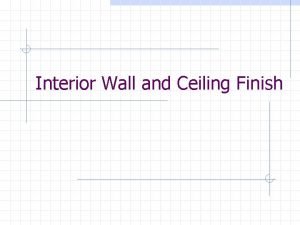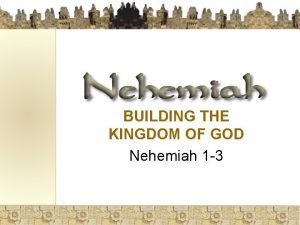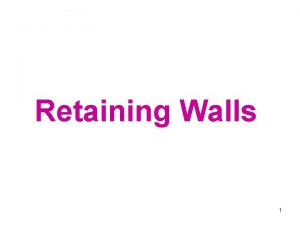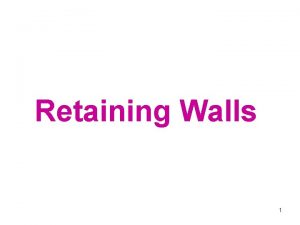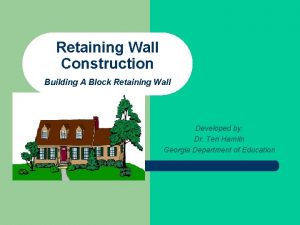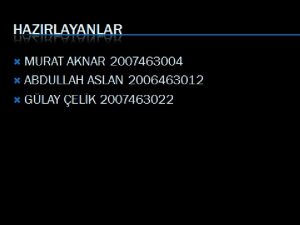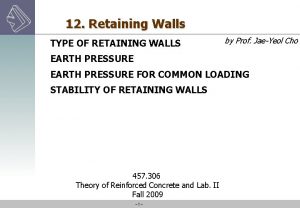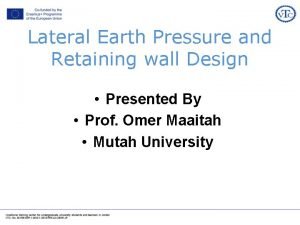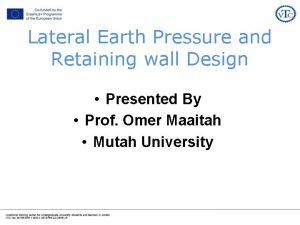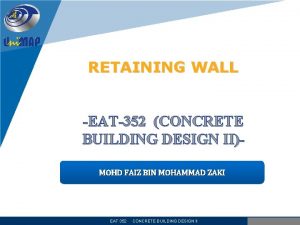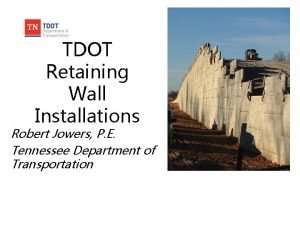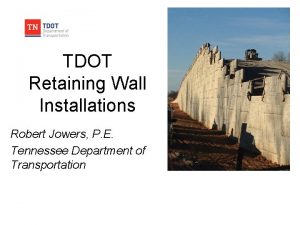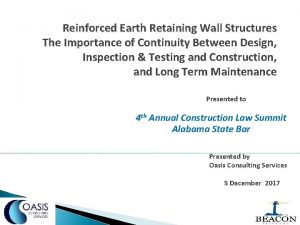Retaining Wall Types And Their Application Thomas M























































- Slides: 55

Retaining Wall Types (And Their Application) Thomas M. Vick, P. E. , PMP TTL, Inc. TACERA Fall Conference October 17, 2018

Retaining Wall Types and Their Application • Terminology – Externally vs. Internally Stabilized • Wall Types – Four main types • Retaining Wall Uses • Wall Selection • Retaining Wall Stability – Modes of Failure

Terminology • A retaining wall is a structure that holds or retains material (usually soil) behind it. There are many types of materials that can be used to create retaining walls like concrete blocks, poured concrete, treated timbers, rocks or boulders. Some are easy to use, others have a shorter life span, but all can retain soil.

Terminology

Terminology

Terminology

Externally vs Internally Stabilized

Wall Types

Gravity Walls • Gravity walls depend on their mass (stone, concrete or other heavy material) to resist pressure from behind and may have a 'batter' setback to improve stability by leaning back toward the retained soil. For short landscaping walls, they are often made from mortarless stone or segmental concrete units (masonry units).

Gravity Walls

Gravity Walls – Concrete Cast

Gravity Walls - Segmental

Gravity Walls – Gabion Walls

Gravity Walls - Segmental

Gravity Walls – SRW

Cantilevered Walls • Cantilever retaining walls are constructed of reinforced concrete. They consist of a relatively thin stem and a base slab. The base is also divided into two parts, the heel and toe. The heel is the part of the base under the backfill.

Cantilevered Walls – Diagram

Cantilevered Walls –Cast in Place

Cantilevered Walls – Precast

Piling Walls • Sheet pile retaining walls are usually used in soft soil and tight spaces. • Sheet pile walls are made out of steel, vinyl or wood planks which are driven into the ground. • For a quick estimate the material is usually driven 1/3 above ground, 2/3 below ground, but this may be altered depending on the environment. • Bored pile retaining walls are built by assembling a sequence of bored piles, proceeded by excavating away the excess soil. • This construction technique tends to be employed in scenarios where sheet piling is a valid construction solution, but where the vibration or noise levels generated by a pile driver are not acceptable.

Piling Walls – Sheet Pile

Piling Walls – Soldier Beam

Piling Walls – Pier and Concrete Panel

Anchored Walls • An anchored retaining wall can be constructed in any of the aforementioned styles but also includes additional strength using cables or other stays anchored in the rock or soil behind it.

Anchored Walls

Anchored Walls – Soil Nail Wall

Anchored Walls

Anchored Walls – MSE

Anchored Walls – Massive MSE

Retaining Wall Uses • Retaining walls are stabilizing structures that are used for holding back earth. There are many reasons for building these structures. 1. 2. 3. 4. 5. 6. 7. Improve Property’s Appearance Create a Flat Area Make a Slope Useful Provide Hanicapped Accessibility Improve Site Drainage Hold Back Water Simplify Maintenance

Retaining Wall Uses 1. Improve Property’s Appearance With proper materials selection, retaining walls can become a highly attractive aesthetic feature of your property. They are wonderful devices for creating interest features in a landscape. You have probably seen many upscale entryways that utilize retaining walls to create a raised area for signage or to frame the entrance with raised landscaping beds.

Retaining Wall Uses 2. Create a Flat Area § Flat ground is almost always more useful than a steep slope. § A retaining wall can convert a slope into a flat level area. This can allow for the construction of structures that otherwise couldn't be built on such a property, like a parking lot, sports field, or building.

Retaining Wall Uses 3. Make a Slope Useful § In many places around the world, whole mountainsides are cut into a series of steps supported by a series of retaining walls. Called terracing, this technique turns land that is too steep to grow crops into useful farm land. § You can utilize this technique on your commercial property, too. Terracing can prevent erosion on steep areas, and can make a steep landscape far easier — and less costly — to maintain.

Retaining Wall Uses 4. Provide Handicapped Accessibility § Retaining walls are often used to create gently sloped ramps for wheelchair access

Retaining Wall Uses 5. Improve Site Drainage § Sometimes a retaining wall can be very useful in directing water on a property. They are also often used to address slope issues near bodies of water. § If you are considering building one for this purpose, be aware that there are many local and state regulations that must be followed. It’s a good idea to find out what the permitting requirements are before even starting to work on the design for such a project.

Retaining Wall Uses 6. Improve Site Drainage § A seawall is a specialized type of retaining wall that separates land from water. § Others function to protect the shore from erosion, to keep the shoreline from shifting, or to create a harbor or docking area for boats. Don’t forget, though — permitting requirements apply here as well!

Retaining Wall Uses 7. Simplify Maintenance § It is a lot easier to maintain a flat area than to have to prune, mow, or plant a slope. They also provide a natural separation between turf and beds. Over time, these easy-care features can shave significant amounts from the cost of landscape maintenance.

Wall Selection

Wall Selection • Wall type will vary depending on the Client • Highway sector will likely be more stringent about type then Private – Highway sector could also be any Federal / State / Municipality – Typically highway sector follows established codes/Std • (AASHTO LRFD Bridge manual, FHWA, Caltrans, etc. • Required Right of Way (ROW) for construction • Performance Issues – (Settlement, lateral Movement, Water tightness) • Cost, Aesthetics, Environmental • Durability and Maintenance requirements

Designing /Selecting Retaining Walls • Type of material being retained • Surcharge loads • Type of retaining wall that would work best for the scenario Ground Conditions • Soil Shear Strength – Short Term, C and phi – Long Term, C’ and phi’ • Ground Water Table • Site Slopes • Necessary Fill • Necessary Cut

Selection - Gravity Walls • This is the most simple retaining wall. • Generally trapezoidal constructed of mass concrete • Relies on self weight to resist overturning and sliding • Typical heights 3 to 10 ft

Selection - Gravity Walls • Advantages – Cheap and Simple to build – particularly suitable for remote areas (such as Mountains) where they can be built from locally available materials – When constructed from natural materials can look attractive • Disadvantages: – Limited to about 5 m height (wall becomes too big for higher walls). – Space needed behind wall for construction and backfilling. – Not suitable for soft soils due bearing failure.

Selection - Cantilever Walls • Generally consists of steel reinforced concrete stem and base • Relies on weight of soil above base to resist overturning and sliding • The vertical ‘stem’ of the wall acts like a cantilever structure to support the lateral earth pressure on the back of the wall. • Typical heights of 6 to 30 feet

Selection - Cantilever Walls • Advantages: – Take up small space with much of structure below ground – No specialist equipment required – standard reinforced concrete skills required for construction • Disadvantages: – Prone to sliding failure – often require propping – Space required behind wall for construction and backfilling – Height limited to about 6 m. – Not suitable for soft soils due bearing failure

Selection - Piling Walls • Embedded cantilever walls also support lateral earth pressures by acting as cantilever structures. But instead of fixity for the cantilever coming from a rigid base, it comes from the passive lateral earth pressure in front of the wall. • They are quick to install and can be installed in difficult site conditions, such as on soft ground or under water. They are installed in flat ground before excavation in front of the wall. They require special equipment for installation which can make them expensive. However, when prop or anchor supports are provided, there is theoretically no limit to the height of embedded cantilever walls. (Props are external structural supports to a wall and anchors are installed in the soil behind the wall). • The walls can be constructed of driven steel sheet piles, reinforced concrete bored piles or reinforced concrete diaphragm walls.

Selection - Piling Walls • Advantages: – Narrow walls which take up little space. – Can be installed up to the site boundary with little or no space required behind the wall for construction – this is particularly advantageous in built-up areas. – Installed quickly and early in construction and wall can form both temporary and permanent support to excavation. – No restriction on height of wall. – Can be installed in weak ground. • Disadvantages: – Expensive option (for short walls). – Specialized skills and equipment are required for their installation. – Vibrations and noise can be issues for neighboring properties

Selection - Anchored Walls

Selection - Anchored Walls • Advantages: – – • Disadvantages: Very versatile in design options Install easily Materials are readily available Can be used to create high, curved or shaped walls – Interlocking walls possible – DIY applications for Homeowners – Can be built in confined areas – Quality control is critical on the anchorage capacity – MSE and SRW require proper reinforcement orientations and locations – Require proper drainage

Retaining Wall Stability • • • External Stability Check Sliding Overturning Bearing Capacity Global Stability Settlement

Stability - Gravity Walls

Stability - Cantilever Walls

Stability - Piling Walls

Stability - Anchored Walls Internal Stability • Tensile Resistance • Pullout Resistance • Face Element Connection • MSEW reinforcement

Typical Factors of Safety External Stability 1. Sliding – FS > 1. 5 2. Limiting Eccentricity – e < B/6 3. Bearing Capacity – FS > 2. 0 4. Global Stability – FS > 1. 3 5. Settlement

Thank You Thomas M. Vick, P. E. , PMP TTL, Inc. 1045 Central Parkway North, Suite 103 San Antonio, TX 78232 210 -888 -6100 tvick@ttlusa. com www. TTLUSA. com
 Types of retaining wall
Types of retaining wall Curtailment of bars in retaining wall
Curtailment of bars in retaining wall Weep hole pipe
Weep hole pipe Parts of a retaining wall
Parts of a retaining wall Concrete retaining wall formwork
Concrete retaining wall formwork K active soil
K active soil Building a timber retaining wall
Building a timber retaining wall Forensic anthropologist vs forensic pathologist
Forensic anthropologist vs forensic pathologist Sound wall phonemic awareness
Sound wall phonemic awareness Chris brown wall to wall
Chris brown wall to wall What is half brick wall
What is half brick wall Members used to carry wall loads over wall openings
Members used to carry wall loads over wall openings Fruit develops from ovary
Fruit develops from ovary Separating and retaining employees
Separating and retaining employees Superior strategy execution capabilities are
Superior strategy execution capabilities are Foundations and earth retaining structures
Foundations and earth retaining structures Process of acquainting new employees with an organization
Process of acquainting new employees with an organization Recruiting millennial physicians
Recruiting millennial physicians Pins, keys & retaining
Pins, keys & retaining Comprehensive approach to retaining employees
Comprehensive approach to retaining employees Comprehensive approach to retaining employees
Comprehensive approach to retaining employees Retaining members in an organization
Retaining members in an organization 4 android components
4 android components In fair verona where we lay our scene modern translation
In fair verona where we lay our scene modern translation Parapet slab
Parapet slab Free word combinations examples
Free word combinations examples 3 types of irony
3 types of irony Types of lipoprotein and their functions
Types of lipoprotein and their functions Functions of lipoproteins
Functions of lipoproteins Types of microscope
Types of microscope Define convenience foods
Define convenience foods Abrasive burs dental
Abrasive burs dental Types of utility software and their functions
Types of utility software and their functions Types of animals and their characteristics
Types of animals and their characteristics Attributes of polygons
Attributes of polygons Tell whether each type of angle is right acute or obtuse
Tell whether each type of angle is right acute or obtuse Portal-oriented application integration
Portal-oriented application integration Information-oriented examples
Information-oriented examples Four types of application software
Four types of application software Specialized software examples
Specialized software examples The curved sealed edge placed between floor and wall
The curved sealed edge placed between floor and wall You mustn't try to build up a wall analysis
You mustn't try to build up a wall analysis Orchard wall romeo and juliet
Orchard wall romeo and juliet A teacher applies a force to a wall and becomes exhausted
A teacher applies a force to a wall and becomes exhausted Curved sealed edge between floor and wall
Curved sealed edge between floor and wall Is work a transfer of energy
Is work a transfer of energy Up in the air and over the wall till i can see so wide
Up in the air and over the wall till i can see so wide A rocket accelerates through space.
A rocket accelerates through space. Sit and reach measurement
Sit and reach measurement Layers and components of the artery wall
Layers and components of the artery wall Wall toss test average
Wall toss test average Walls and studs organelle
Walls and studs organelle Cell wall and membrane
Cell wall and membrane Finishing materials meaning
Finishing materials meaning Nehemiah's prayer and preparation to rebuild the wall
Nehemiah's prayer and preparation to rebuild the wall The broken wall the burning roof and tower
The broken wall the burning roof and tower
